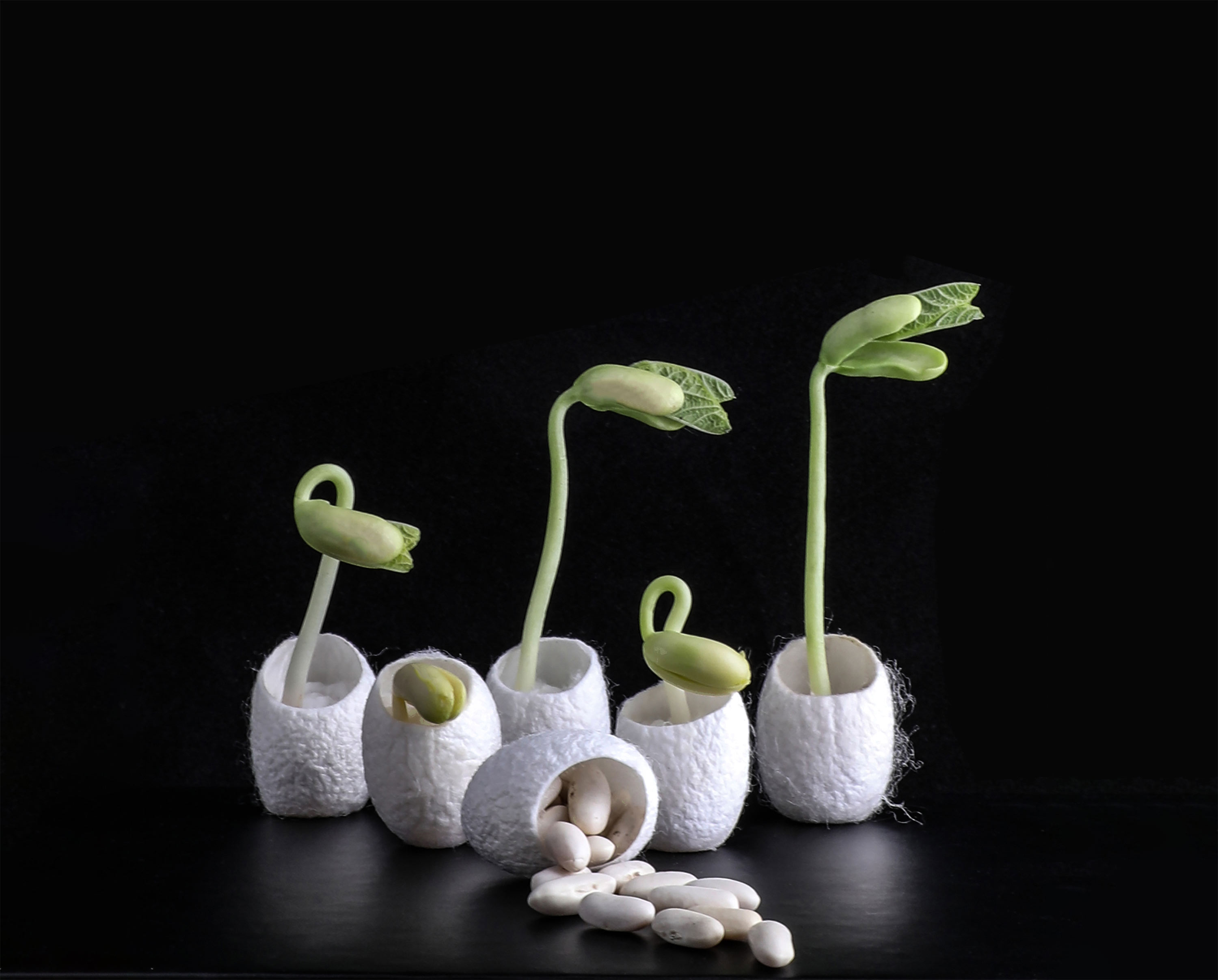Silky seeds

Coating seeds with specially treated silk could make it possible to grow crops in otherwise unproductive soils, according to new research at MIT.
The silk, which protects the seeds from soil that would normally be too salty, also contains a kind of bacteria that naturally produce a nitrogen fertilizer. Lab tests have shown that the seeds grow successfully in these salty conditions.
The findings grew out of research by Benedetto Marelli, a professor of civil and environmental engineering, on using silk coatings to extend the shelf life of seeds used as food crops. During this work, he “stumbled on biofertilizers that can be used to increase the amount of nutrients in the soil,” he says. Such fertilizers use microbes that convert nitrogen from the air into a form plants can readily take up. They avoid the drawbacks of conventional nitrogen fertilizers, which he says may degrade soil quality and are very energy intensive to produce.
Although nitrogen-fixing bacteria occur naturally in soils around the world, they are very hard to preserve outside their native environment. But Marelli and his team found that mixing them with silk derived from silkworm cocoons (like those seen here) and a type of sugar did the trick. In practice, the treated silk could be simple to apply to seeds by either dipping or spray coating, they say. Legumes such as beans and chickpeas have been the focus of the research so far, but it may be possible to adapt the technique to other crops.
The researchers are now working on coatings that could also make seeds more resistant to drought. They plan outdoor tests in Morocco this year.
Keep Reading
Most Popular
Large language models can do jaw-dropping things. But nobody knows exactly why.
And that's a problem. Figuring it out is one of the biggest scientific puzzles of our time and a crucial step towards controlling more powerful future models.
How scientists traced a mysterious covid case back to six toilets
When wastewater surveillance turns into a hunt for a single infected individual, the ethics get tricky.
The problem with plug-in hybrids? Their drivers.
Plug-in hybrids are often sold as a transition to EVs, but new data from Europe shows we’re still underestimating the emissions they produce.
Stay connected
Get the latest updates from
MIT Technology Review
Discover special offers, top stories, upcoming events, and more.